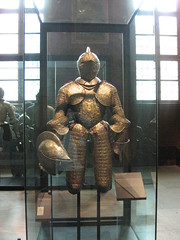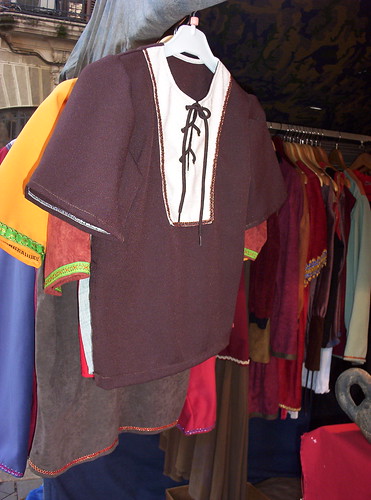MoMA Exhibition of Drawings for Theater, Dance, and Opera Explores Visual Experimentation on the Stage
The exhibition highlights set and costume studies, as well as more abstract suggestions of light and mood, from the total theaters of the Ballets Russes and the Bauhaus, to Lincoln Kirstein’s formation of the New York City Ballet, to Pop performances and contemporary epic opera.
The works, many rarely on view, span a century of visual experimentation on the stage, demonstrating how artists have used drawing strategies to translate texts into dramatic mises-en-scène, articulate illumination and shadow, imagine the form and presentation of character, manipulate bodies in space, and express duration.
Such artists as Marc Chagall, Sonia Delaunay-Terk, Jim Dine, George Grosz, David Hockney, William Kentridge, Fernand Léger, Lyubov Popova, Diego Rivera, Oskar Schlemmer, and Robert Wilson are featured alongside career set and costume designers.
Several video projections of realized performances are also shown, complementing related drawings. The exhibition, on view March 11 through August 25, 2009, is organized by Jodi Hauptman, Curator, Department of Drawings, The Museum of Modern Art.
MoMA’s commitment to stage pictures dates to 1939, when Lincoln Kirstein, a colleague of MoMA’s founding director Alfred H. Barr, Jr., and the eventual founder of the New York City Ballet, gave his personal collection of performance-related books and ephemera to the Museum, establishing a Dance Archives that would, for a brief period in the mid-1940s, become a separate curatorial department.
Though the Museum’s Department of Dance and Theatre Design (later the Department of Theatre Arts) was short lived, the Museum continues to collect theater-related work today.
While the works in the exhibition vary in emphasis—from those with roots in folk traditions, machine aesthetics, or the mass media, to others that question the architecture of the stage, make abstract forms three-dimensional, or envision a total artwork on an epic scale—they all reflect a desire to create something new, to work across mediums, and to unify the arts.
Folk traditions were exploited and modified by artists associated with Serge Diaghilev’s Ballets Russes, including Natalia Goncharova (Russian, 1881-1962), who created a city square inspired by the bold outlines of Russian icon painting and the abstract patterns of peasant embroidery for the 1937 Ballet Russe de Monte Carlo revival of Le Coq d’or. A study for this elaborate backdrop is on view in the galleries.
Inspired by the world of rapid industrialization, many artists focused on the workings of the machine, including Fernand Léger (French, 1881-1955) and Oskar Schlemmer (German, 1888-1943).
Commissioned for the 1922 Ballets Suédois production of Skating Rink, Léger’s mechanical costumes, once set in motion, reflected the artist’s sense that the rhythm of industry and the modern city’s everyday bustle were the most entrancing of spectacles.
For Schlemmer’s Triadic Ballet, performed for the first time in its entirety in 1922, the artist created costumes that transformed the dancers from humans into mechanized puppets. Sketches of Schlemmer’s costumes are shown alongside a filmed reconstruction of the ballet from 1970.
Folk traditions merge with machine aesthetics in works such as Lyubov Popova's (Russian, 1889-1924) costume drawing for a 1921 Moscow production of Romeo and Juliet. For this design, Popova created a suit of armor out of hard-edged blue polygons resembling sheets of metal. The result is a costume that is both medieval and mechanical.
Diego Rivera (Mexican, 1886-1957) emphasized the tension between industry and nature in designs for the 1932 Philadelphia Civic Opera Company's production of H.P. (Horsepower). In the drawings on view, costumes animate tropical fruit and gold and silver bars, while sets juxtapose flora and machines.
Pop art's impact, as well as the emancipating effect of 1960s Happenings on traditional performance, can be found in colorful collaged designs by Jim Dine (American, b. 1935) and David Hockney (British, b. 1937). Taking his cue from a Red Devil paint sample chart, Dine employed a rainbow palette in a series of drawings for a raucous 1966 performance of A Midsummer Night's Dream.
More recent projects by artists such as Robert Wilson (American, b. 1941) and William Kentridge (South African, b. 1955) show efforts to create multimedia productions on an epic scale.
On view is a recent acquisition, a drawing from the series Preparing the Flute (2005), Kentridge's backdrop design for Mozart's opera The Magic Flute, which he directed and co-designed in 2005.
To prepare for the production, the artist created black-and-white drawings that employ photography's positive and negative imagery to emphasize the opera's larger themes of darkness and light.
Just outside the galleries are two reconstructions of costumes by Pablo Picasso (Spanish, 1881-1973) for the 1917 Ballets Russes production of Parade. Picasso created set and costume designs to accompany a scenario by Jean Cocteau, music by Erik Satie, and choreography by Léonide Massine.
Accompanying these large-scale works—including The French Manager (1917), which measures almost 9-feet tall—is a video excerpt of the Joffrey Ballet's 1973 revival of Parade.
Taken From ArtDaily.org



